Enlightened. Torino, Italy. April 2018.
The Galleria Grande at Reggia di Venaria. Torino, Piemonte, Italy. April 2018.
Architect: Amedeo di Castellamonte, 1675
Italy
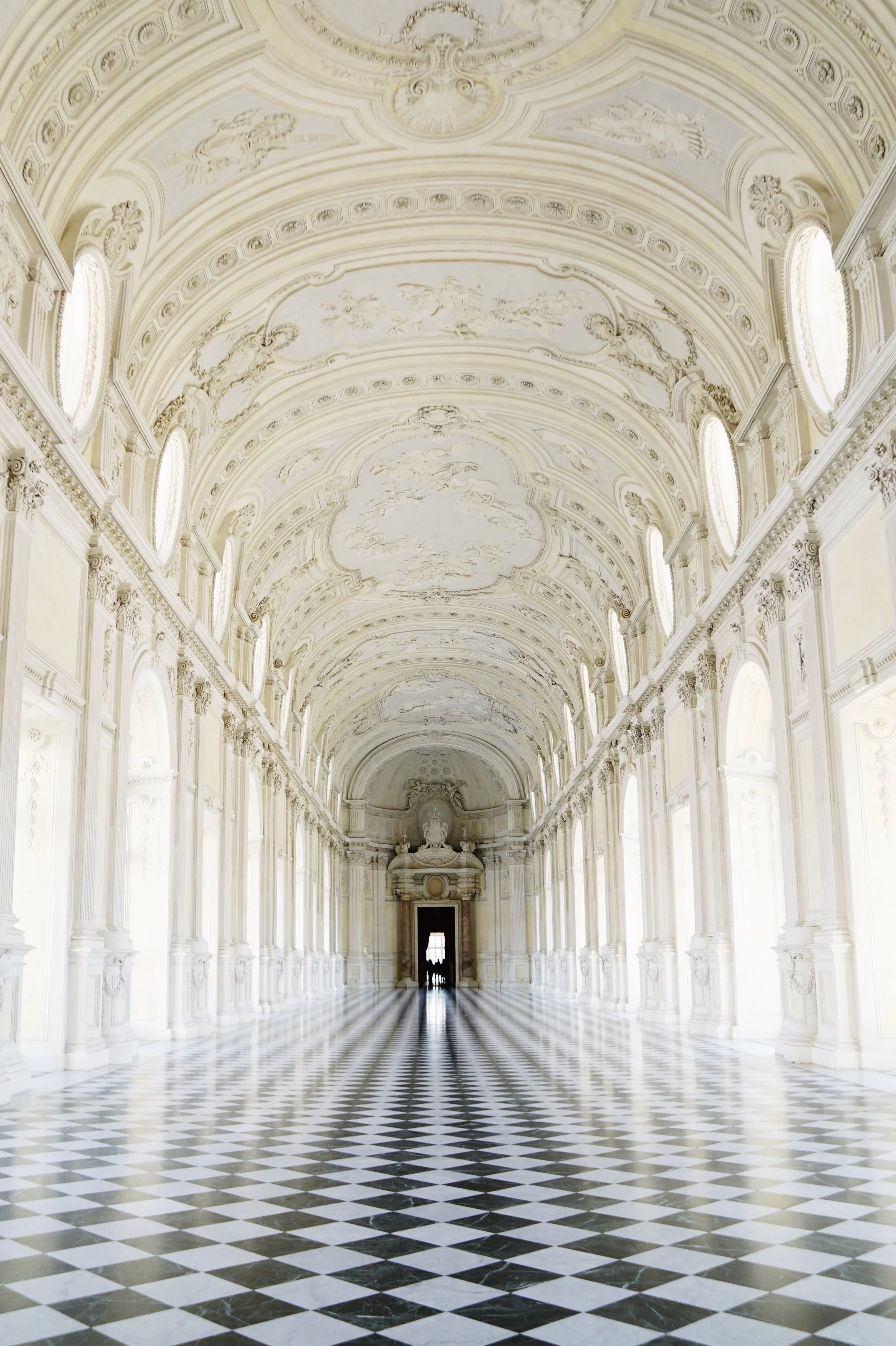
Enlightened. Torino, Italy. April 2018.
The Galleria Grande at Reggia di Venaria. Torino, Piemonte, Italy. April 2018.
Architect: Amedeo di Castellamonte, 1675
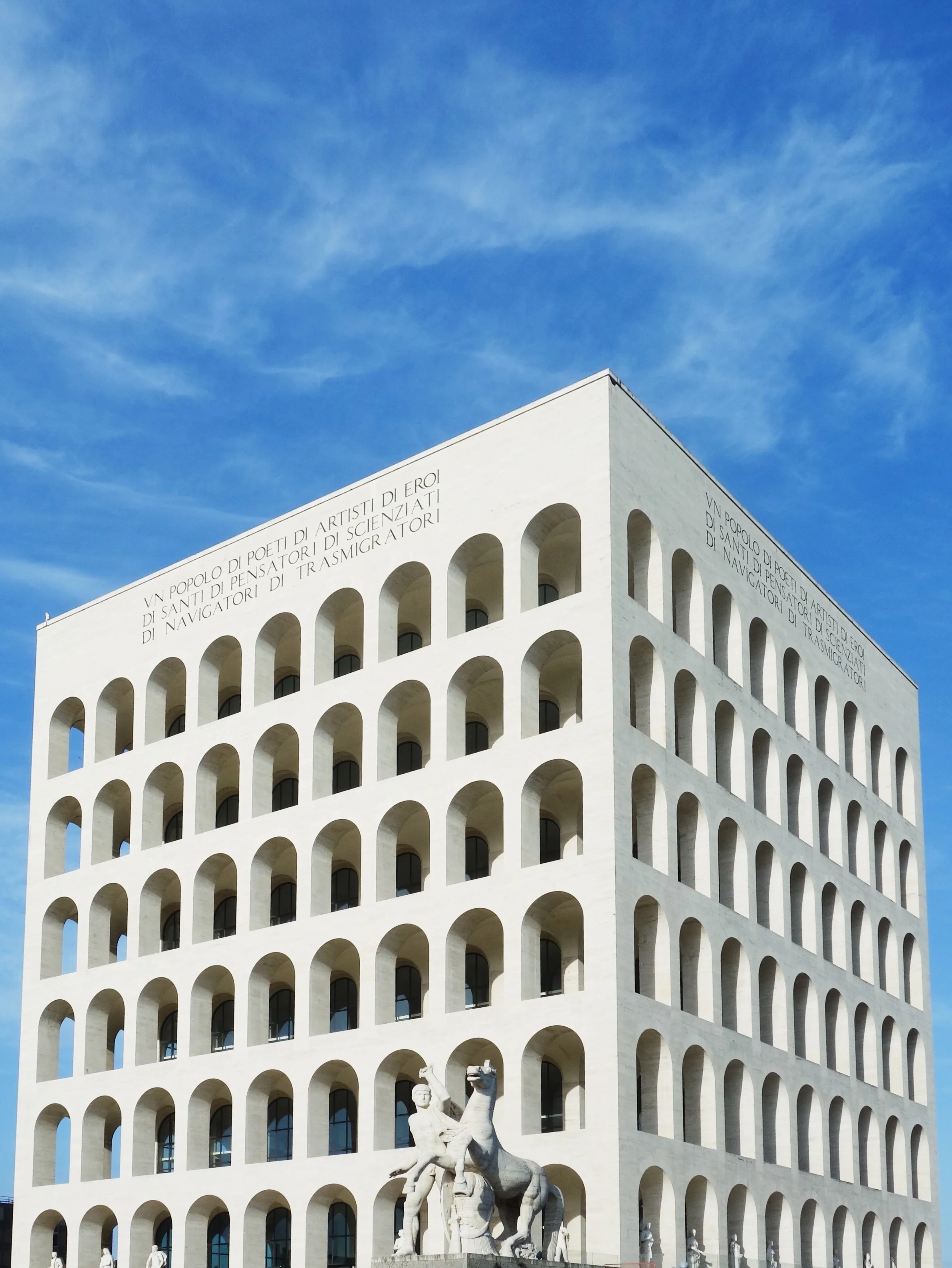
Squared Away. Rome, Italy. March 2016.
The Palazzo della Civiltà Italiana (or Colosseo Quadrato) is one of my favorite examples of rationalist architecture. Just outside of Rome in the EUR neighborhood, the palazzo was recently renovated to be the global headquarters for fashion powerhouse Fendi. While I enjoy the aesthetics, it has a bit of a controversial past.
The palazzo was constructed between 1938-1943 and created to showcase Benito Mussolini's grand fascist vision for Rome, Italy, and the world. EUR was created to host the 1942 World's Fair and the palazzo was its centerpiece. It is rumoured that there are nine window arches to match the number of letters in "Mussolini". If you look across the top of the photo you can count: M-U-S-S-O-L-I-N-I.
The plans for the exhibition were actually canceled in 1941 during the finishing of the palazzo and it sat unused for a decade after its completion. The palazzo has open and closed intermittently since 1953, and in 2015 Fendi moved in after a five year public restoration period. Fendi will call the palazzo home at least until 2030.
I am headed back to Rome this month and will hopefully make it back to visit EUR.
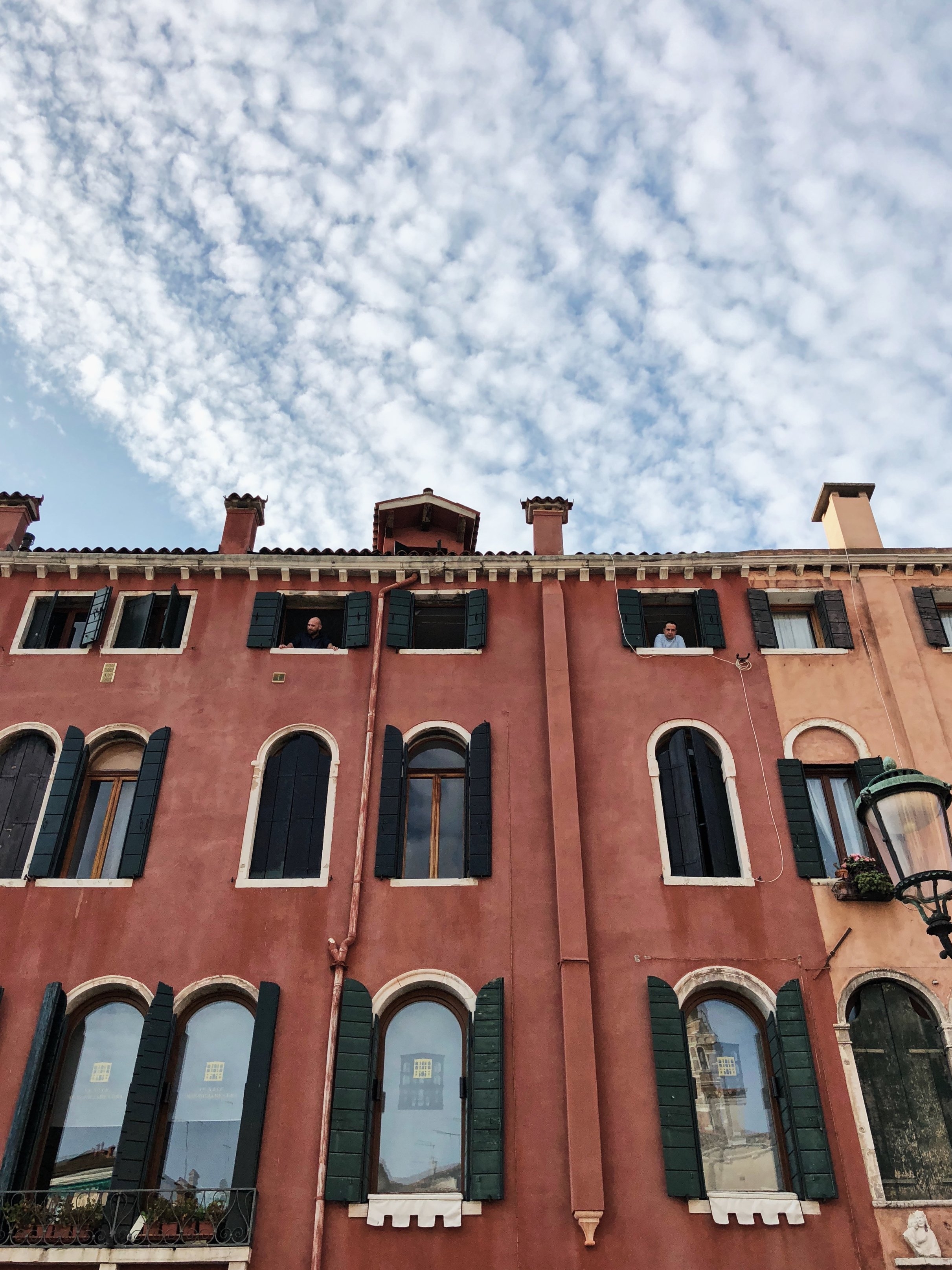
The Lookouts. Venice, Italy. September 2017.
Campo San Stefano. Venice, Italy. September 2017.
These two know how to people watch.
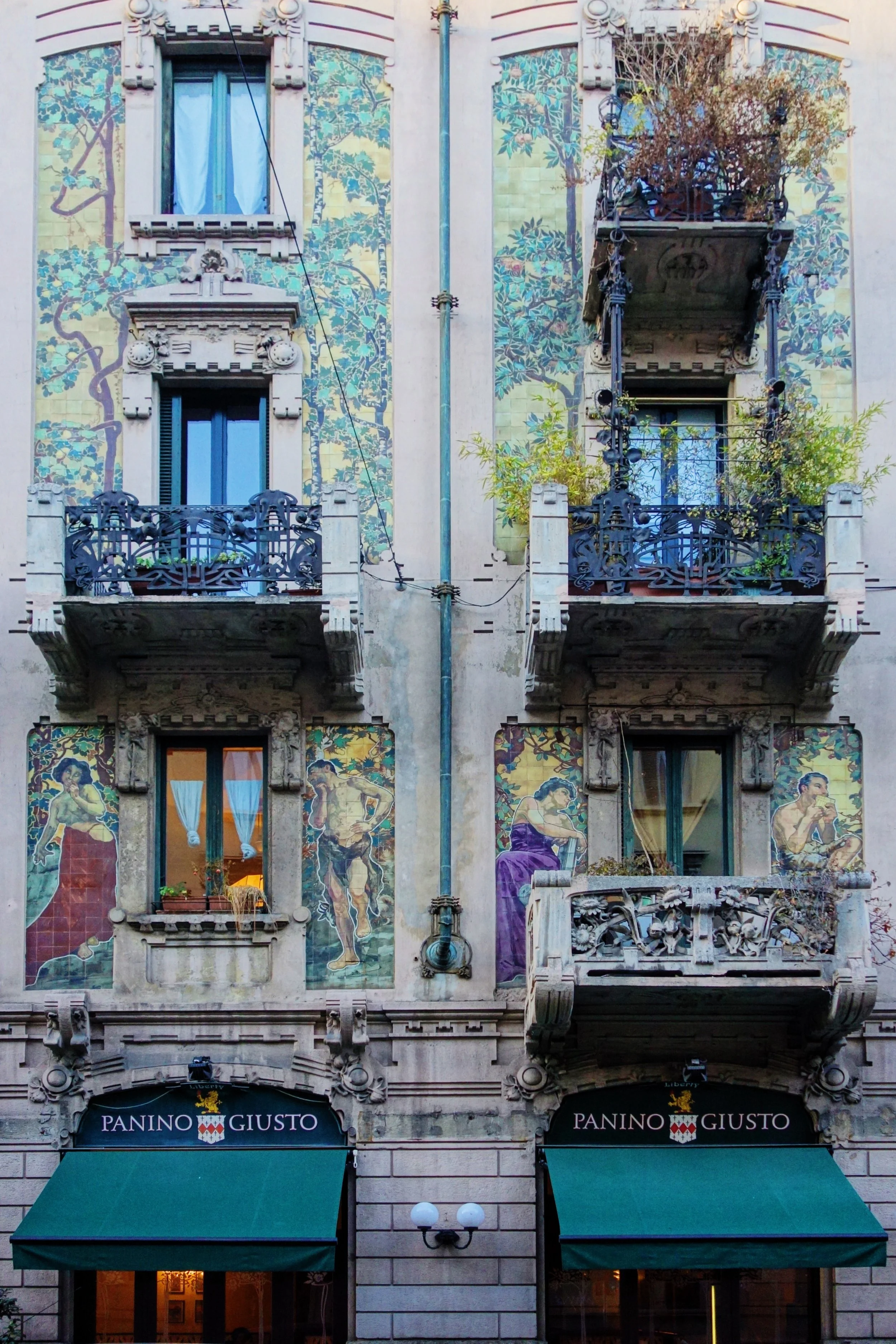
Give Me Liberty. Milan, Italy. April 2016.
Milan, Italy. April 2016.
Hidden in Milan near Porta Venezia is an enclave of art nouveau (aka liberty style) buildings. One of the most notable examples is pictured here, the turn of the century palazzo Casa Galimberti. The exterior features a whimsical façade of feminine and masculine figures, curved wrought iron, a floral motif, and ceramic tiling. The nouveau exterior of Casa Galimberti actually stretches beyond this panel and wraps around the entire 170 meters of the palazzo. The building and the exterior were both designed and executed by architect Giovanni Battista Bossi between 1903-1906. While the city is known for it's flashier architecturural marvels like Boeri's Bosco Verticale, Pelli's Unicredito Tower, and the Galleria, this section of Milan has the air of cities like Brussels, Paris, Glasgow, and Barcelona, where Art Nouveau is much more common.

Secret Garden. Milan, Italy. May 2015.
The courtyard pictured here is actually no secret. This patio and garden is part of Corso Como 10, a space that may actually be one of the most highly trafficked in Milan. I refer to this as a "secret garden" because it is a prime example of the beauty that hides behind many closed doors here in Milan. Many may disagree with me, but judging solely based on exteriors, buildings in this city can feel stoic and cold. However, if given the chance to venture beyond the closed doors, you may discover beautiful secret gardens.

Glass Ceiling. Milan, Italy. May 2015.
Named after Italy's first king, Galleria Vittorio Emanuele II connects two of Milan's most famous landmarks, Teatro Alla Scala and The Duomo. Construction was completed in 1877 and it is officially the world's oldest shopping mall. The cast iron and glass ceiling roof was one of the first of it's kind (along with a few others like Galerie du Roi (Galeries Royales Saint-Hubert) in Brussels and Galleria Umberto I in Naples), however the dimensions of this ceiling and arcade were much larger than any of the predecessors. The galleria was an international effort in terms of design and construction, especially when it came to the gleaming roof—the ironwork was produced and installed by the French craftsman Henry Joret and the glass plates were also manufactured in France. In a strange and tragic twist, the architect behind the galleria, Giuseppe Mengoni, passed away the day before the galleria was to be inaugurated after falling from the roof while inspecting the final decorative details.
Mengoni's vision stands as one of the busiest and most photographed places in Milan. It is a beautiful landmark and during the World's Fair in 2015, the U.S. Pavilion in partnership with the James Beard Foundation created a fine dining restaurant from this space on the top floor of the arcade and this is where I captured this shot.

Private Ride. Venice, Italy. September 2015.

L.O.V.E. Milan, Italy. May 2015.
Milan has a sense of humor. This is one of the more fascinating sculptures in the city that one should not miss. Located in the middle of Piazza Affari, it is hidden in the business district of the city. The sculpture was created in 2010 by Maurizio Cattelan, placed in the piazza, and was only supposed to stay in the square for a couple of weeks, yet here it stands seven years later. The Milanese government decided to keep it up indefinitely. So what is Cattelan's sculpture flipping off? Well, that's the best part; the hand is placed right in front of the "Borsa" a.k.a. Italian stock exchange. While Cattelan has never explicitly said what the message of his work is, it is safe to assume that it is a big "f*ck you" bankers. It is widely accepted to be a harsh commentary on the European economic crisis that plagued Europe in 2008 and hit Italy especially hard. If the gesture itself and the placement are not explicit enough, Cattelan titled his piece L.O.V.E., an acronym for Libertà, Odio, Vendetta, Eternità (Freedom, Hate, Vengeance, Eternity). Irony at its best.
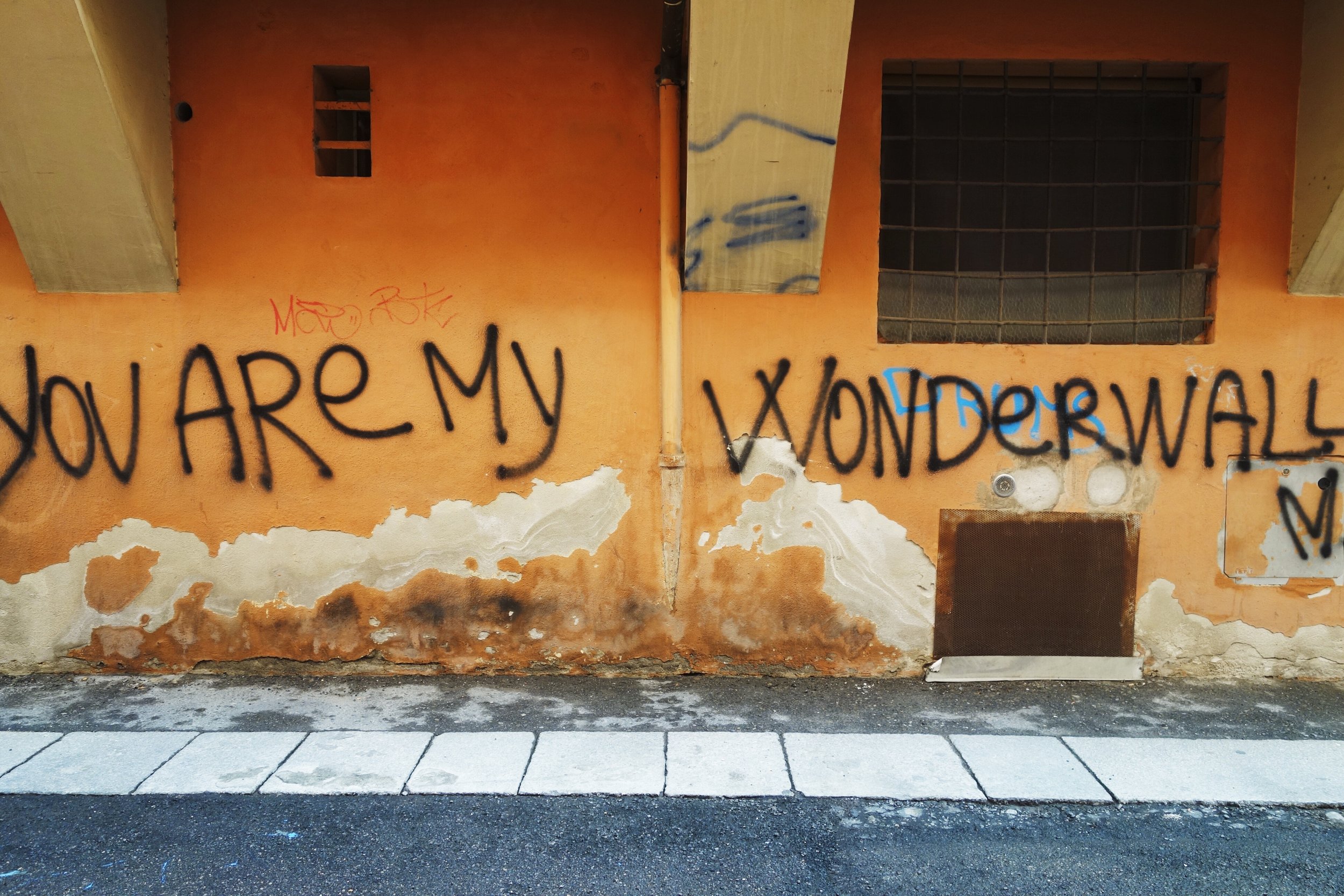
Urban Oasis. Bologna, Italy. July 2015.
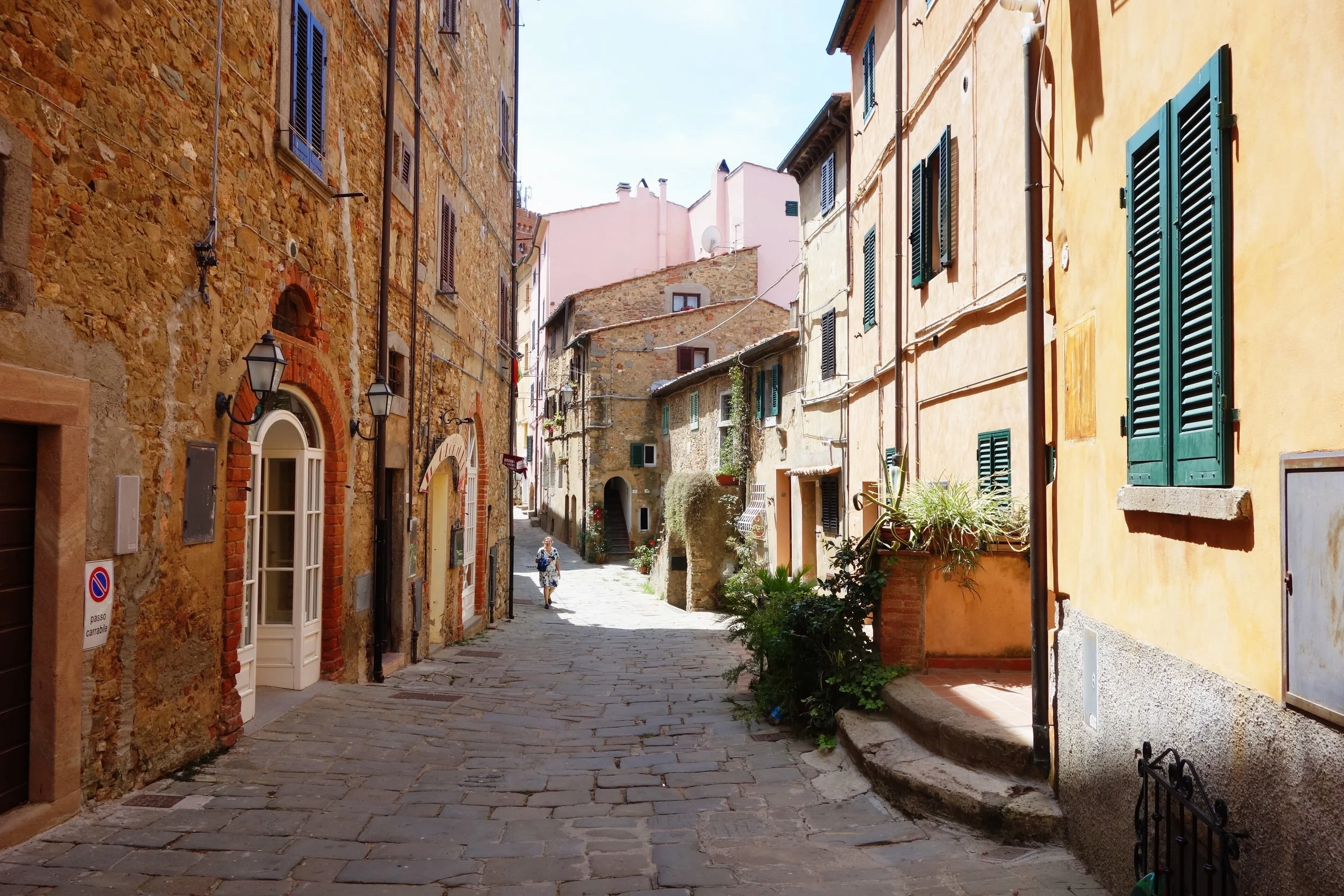
Her Golden Path. Bolgheri, Italy. July 2015.
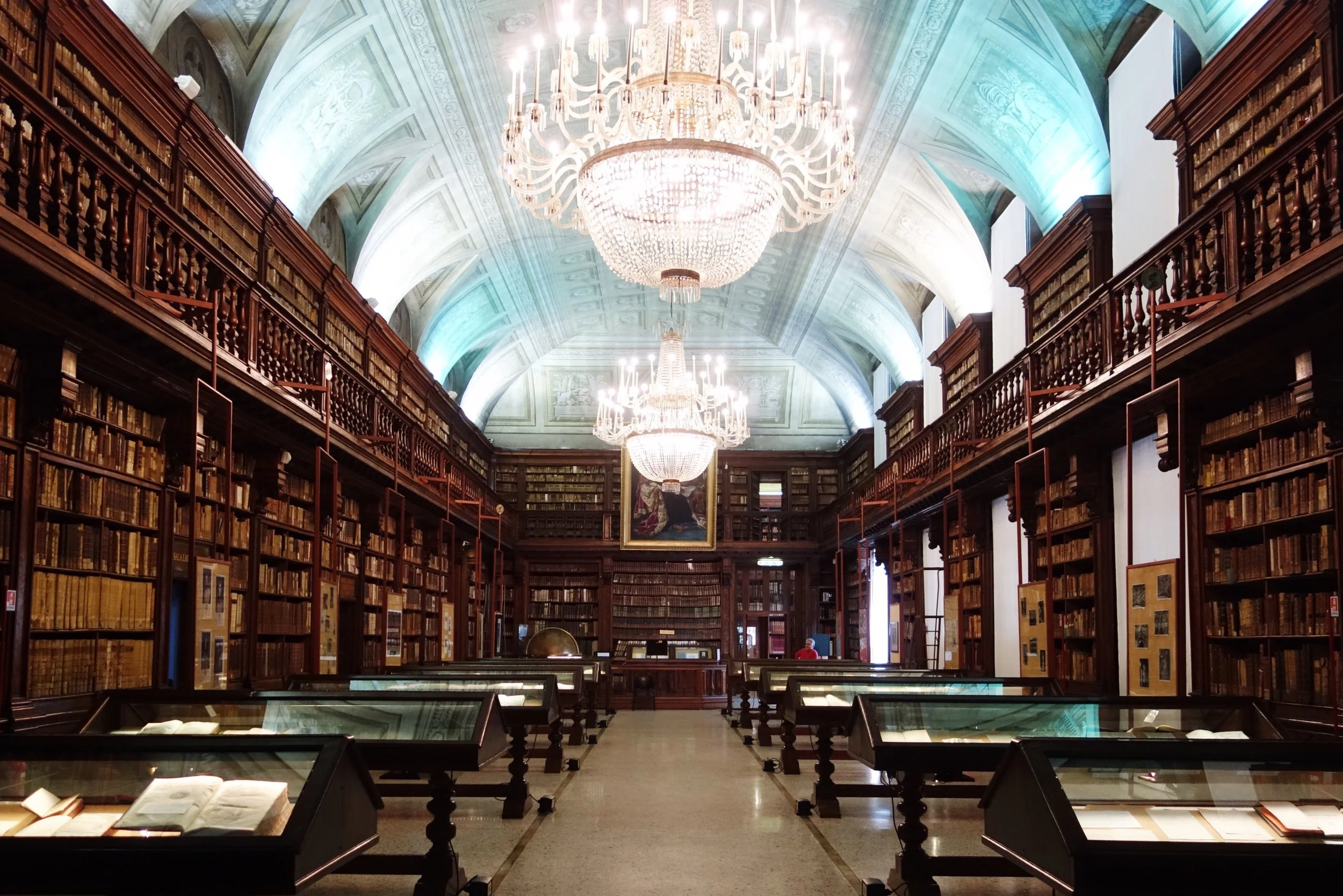
Secret Library. Milan, Italy. March 2016.
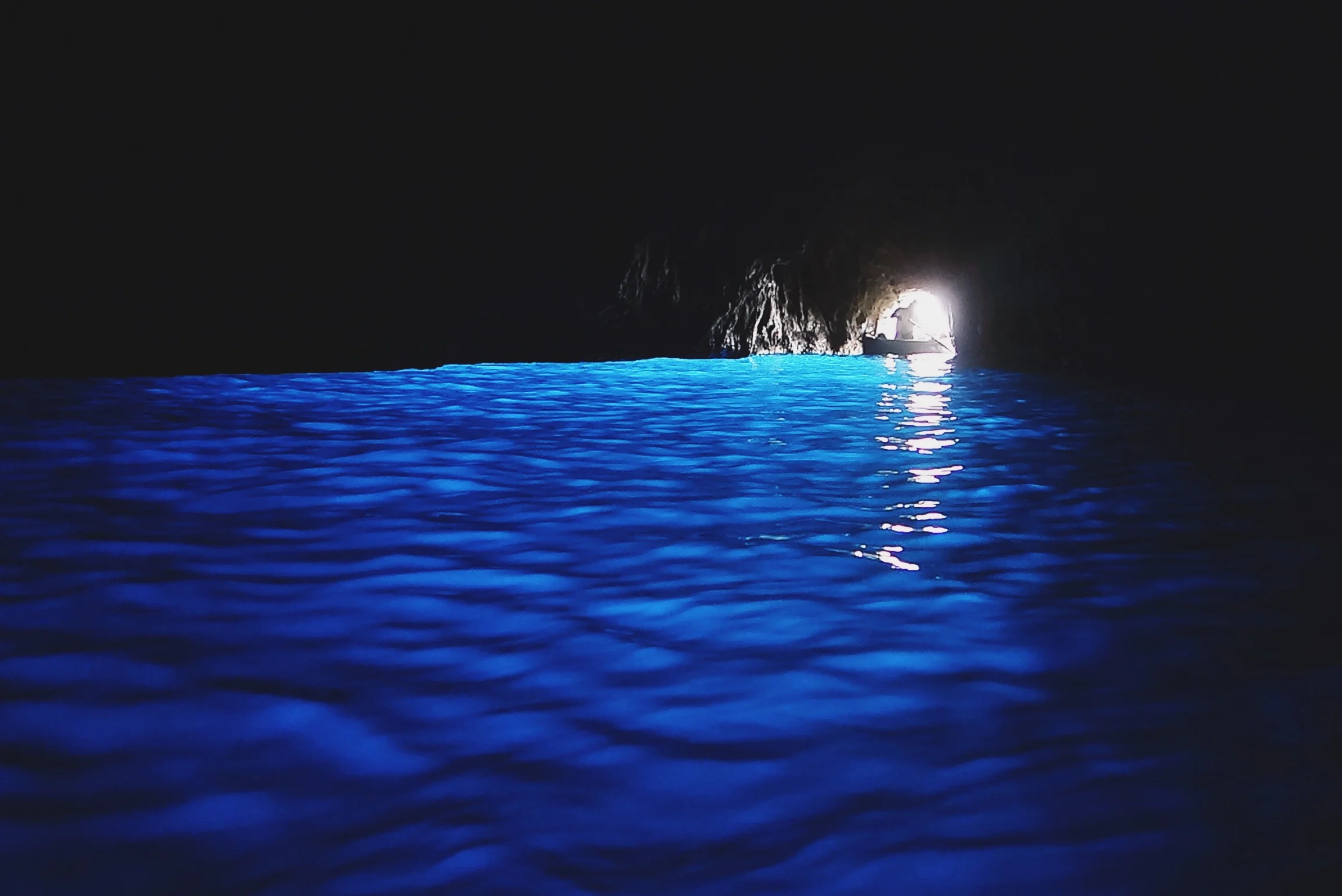
It's Electric. Capri, Italy. June 2015.
I made the escape to Capri my first weekend free from Expo. I had not been in 12 years and it was refreshing to go back, enjoy a sail around the island, and the boat ride into the Grotta Azzurra. While the singing of "Volare" reverberating off the cave walls is boisterous and fun, the boat ride is slightly disappointing in that it only lasts for a few minutes. It's worth the trip, but you have to move fast to get a good shot and enjoy the electric blue water. Every time I look back at this photo, I hear "Nel blu dipinto di blu, felice di stare lassù..." on repeat.